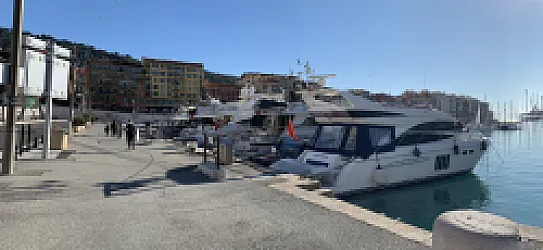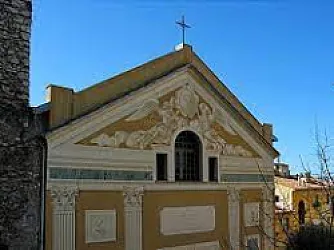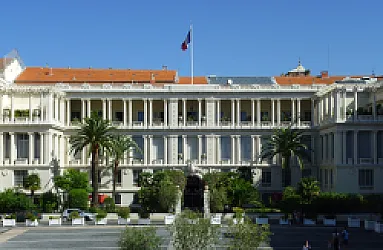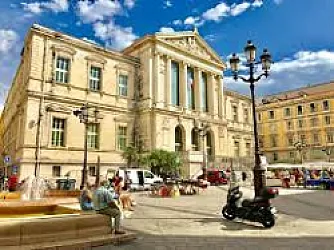Visit Nice in 2 days
8 must-see POIs, optimized routes and anecdotes.
Loading map...
You will visit the most beautiful points of interest in Nice
2 Days in Nice — Strolls, Palaces and Sea-Air Magic
Nice stole my heart the moment I walked its sun-warmed promenades. The city truly feels like the "Queen of the Riviera." Some say it's overrated, but that misses the delicate light and stone that make Nice unforgettable. I arrived with a beating curiosity and left with pockets full of memories. This short guide grew from those first footsteps and from the quiet joy of discovering hidden corners.
Why visit Nice beyond the postcards? Because the city blends grand architecture and everyday life. You will hear church bells over the sea. You will taste warm, peppery socca from a street vendor. Walks along Quai Napoléon 1er reveal an elegant waterfront. The austere façade of Palais de Justice contrasts with the hush inside Chapelle de la Visitation. Light plays on the stone of Palais de la Préfecture, making every corner feel cinematic. This Nice itinerary gives you a taste of history, architecture, and coastal breeze. Expect to feel both energized and gently soothed.
Planning a trip can feel overwhelming. There is so much to see that you could stay for weeks. If you are worrying about time, I get it. You might be visiting for the first time in Nice and want to make every minute count. That’s exactly why I created this focused plan. Below, I'll show you exactly how to spend 2 days in Nice to maximize your time. This route highlights palaces, historic architecture, and the most interesting places without rushing you.
Key tip: Start early to beat the crowds and catch the golden morning light. Mornings are calmer at Quai Napoléon 1er and the chapels are quiet then. Early starts mean better photos and kinder queues. Bring comfortable shoes and a light jacket for sea breezes. Move slowly through a few places rather than skimming many. Now let’s dive into the itinerary!

Quick Mini Guide to Nice
Where to stay:
- Vieux Nice for narrow streets, Cours Saleya market and walking distance to Chapelle de la Visitation.
- Port / Quai Napoléon 1er area for easy access to Palais de la Préfecture and seafood restaurants.
- Choose a seafront room on Promenade des Anglais if you want sunrise walks and pebble‑beach access.
When to visit:
- Spring or early autumn: mild weather, fewer cruise crowds; mornings are best for Palais de Justice visits.
- Avoid late July–August if you dislike heat and packed beaches; late afternoon is golden for photos on Quai Napoléon 1er.
Things to do:
- Morning loop: Palais de la Préfecture → Quai Napoléon 1er (harbour life) → Palais de Justice — all walkable from the Port.
- Stroll Vieux Nice to Chapelle de la Visitation, then Cours Saleya for socca and local produce.
- Book an interactive tour: The Alchemist NICE (city game), Mates (local guides), or Mess and Madness NICE (themed experience) to meet locals and discover hidden alleys.
Don't forget:
- Comfortable shoes for cobbles and pebble beach; many streets are pedestrian-only.
- Check opening hours and bring ID for administrative buildings like Palais de Justice/Préfecture.
- Try socca, bring a light layer for sea breeze, and carry some cash for market stalls.
Day 1 - Nice
4 POIs to discoverDay 1 - Morning à Nice
4 Points of interest - Duration : 3h00 - Distance : 1.7 km - Walking : 0h23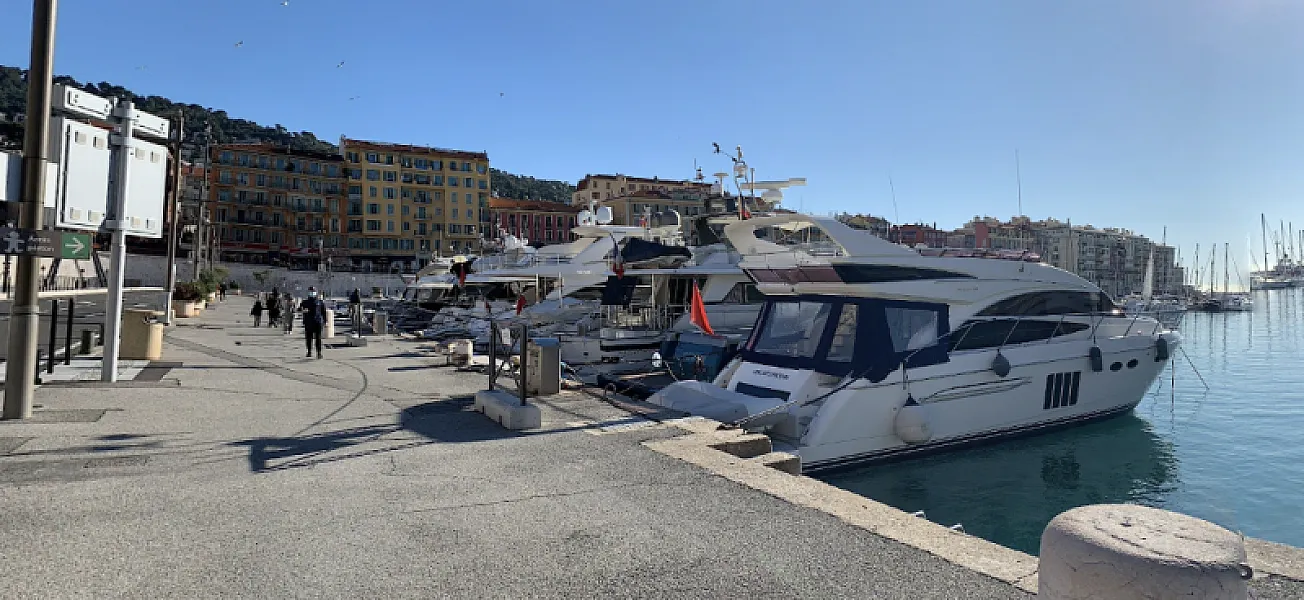
Quai Napoléon 1er
- It offers stunning panoramic views of the sea and is a popular place to stroll and enjoy the coastal scenery.
- The promenade is also home to the port of Nice.
- It is an ideal place to enjoy beautiful sunsets over the Mediterranean Sea.
- Along the promenade, you will find stores, restaurants and bars where you can enjoy the local gastronomy.
- It is also an access point to the beaches of Nice, where you can relax and enjoy the sun.
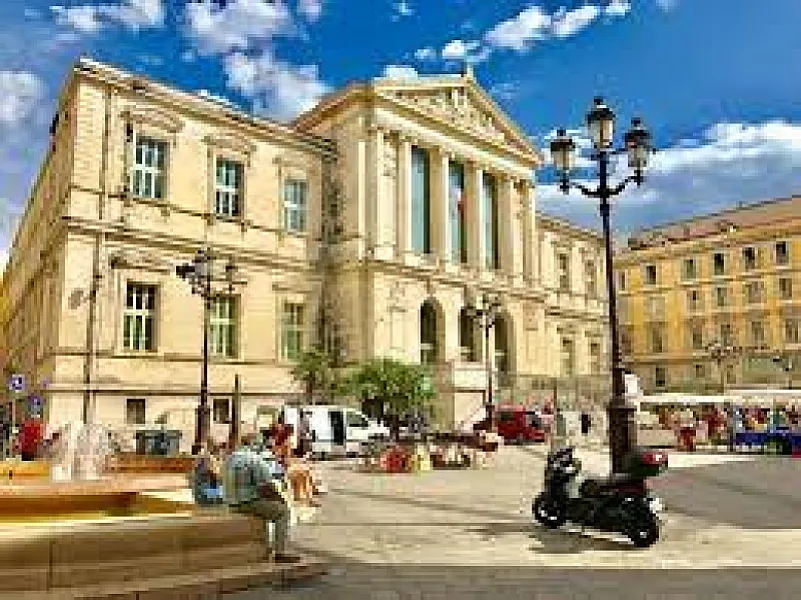
Palais de Justice
- The Palais de Justice is Nice's courthouse, where court proceedings are held and legal matters are administered.
- The building features imposing, classical architecture that reflects the seriousness of its function.
- Palais de Justice has a long history in the administration of justice in Nice and has witnessed numerous cases over the years. It is the seat of the courts and legal offices where lawyers, judges and officials work to secure justice.
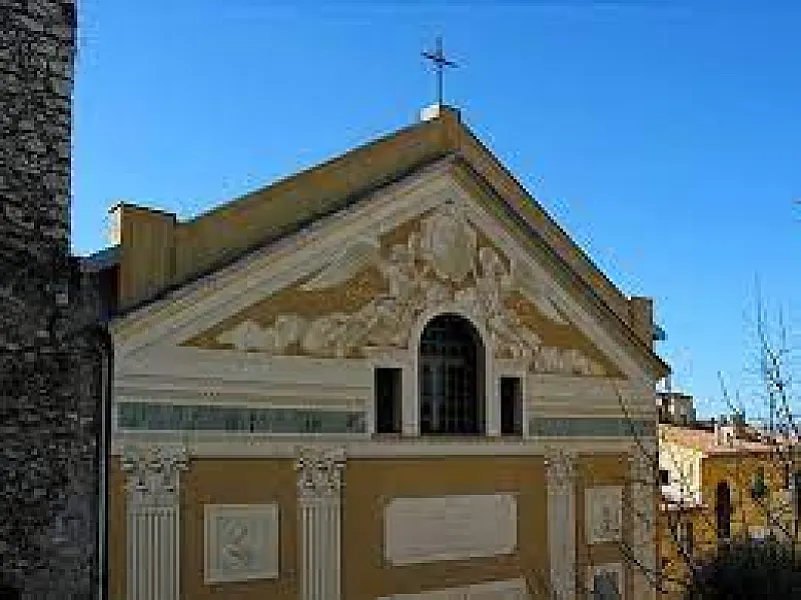
Chapelle de la Visitation
- The buildings were built in the early 16th century by Cistercian nuns.
- In 1812, the buildings were used as a charity.
- Since 2002, the building has housed the Centre culturel de la Providence, managed by the association La Semeuse.
- The chapel houses an organ located in the main nave, which has been moved and restored several times, becoming a historical monument in 2003 and being restored in 2014.
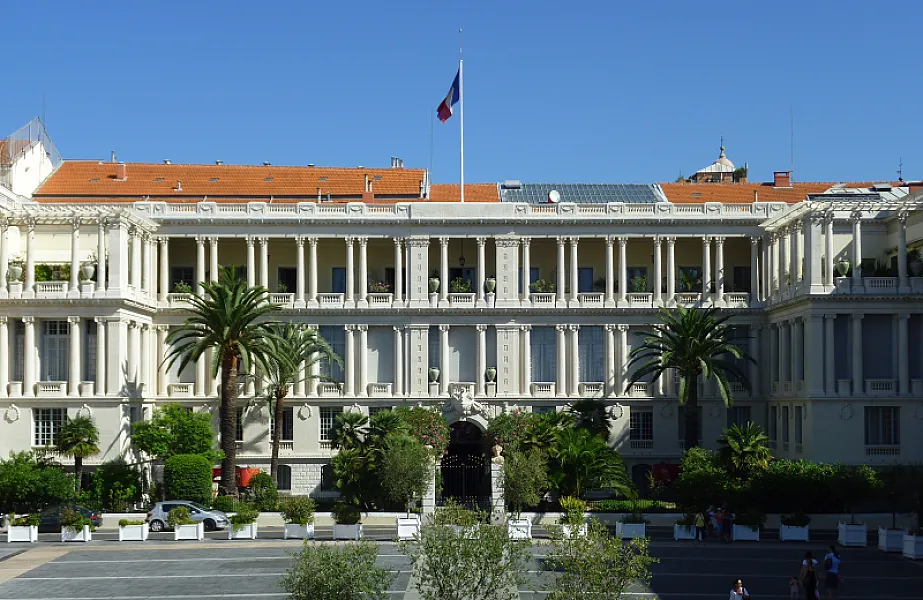
Palais de la Préfecture
- Nice's Palais Préfectoral, located in Vieux-Nice, is today the headquarters of the Alpes-Maritimes prefecture and the residence of the prefect.
- Previously, it was a royal residence of the kings of Piedmont-Sardinia until 1860.
- The palace has ancient origins, dating back to the Dukes of Savoy, but underwent numerous extensions and transformations in the 19th and 20th centuries.
- In the mid-18th century, the sovereigns of Sardinia purchased part of the Dominican convent to enlarge the palace.
- The palace has served as a royal residence and hosted many historical figures, including Napoleon III.
- It has been listed and partially classified as a historic monument since 1996.
Day 2 - Nice
4 POIs to discoverDay 2 - Morning à Nice
4 Points of interest - Duration : 3h00 - Distance : 1.7 km - Walking : 0h23
Quai Napoléon 1er
- It offers stunning panoramic views of the sea and is a popular place to stroll and enjoy the coastal scenery.
- The promenade is also home to the port of Nice.
- It is an ideal place to enjoy beautiful sunsets over the Mediterranean Sea.
- Along the promenade, you will find stores, restaurants and bars where you can enjoy the local gastronomy.
- It is also an access point to the beaches of Nice, where you can relax and enjoy the sun.

Palais de Justice
- The Palais de Justice is Nice's courthouse, where court proceedings are held and legal matters are administered.
- The building features imposing, classical architecture that reflects the seriousness of its function.
- Palais de Justice has a long history in the administration of justice in Nice and has witnessed numerous cases over the years. It is the seat of the courts and legal offices where lawyers, judges and officials work to secure justice.

Chapelle de la Visitation
- The buildings were built in the early 16th century by Cistercian nuns.
- In 1812, the buildings were used as a charity.
- Since 2002, the building has housed the Centre culturel de la Providence, managed by the association La Semeuse.
- The chapel houses an organ located in the main nave, which has been moved and restored several times, becoming a historical monument in 2003 and being restored in 2014.

Palais de la Préfecture
- Nice's Palais Préfectoral, located in Vieux-Nice, is today the headquarters of the Alpes-Maritimes prefecture and the residence of the prefect.
- Previously, it was a royal residence of the kings of Piedmont-Sardinia until 1860.
- The palace has ancient origins, dating back to the Dukes of Savoy, but underwent numerous extensions and transformations in the 19th and 20th centuries.
- In the mid-18th century, the sovereigns of Sardinia purchased part of the Dominican convent to enlarge the palace.
- The palace has served as a royal residence and hosted many historical figures, including Napoleon III.
- It has been listed and partially classified as a historic monument since 1996.
Where to Stay in Nice
With only two days in Nice, location is the single biggest time-saver: choose a base that keeps your must-see sites — the Palais de Justice, the Palais de la Préfecture, Quai Napoléon 1er and the Chapelle de la Visitation — within easy reach so you spend your time exploring, not commuting. Nice is compact and layered: a sunny seafront, a bustling old town and quieter residential hills, so a smart pick means more leisurely café stops and less sprinting between sights.
The city is organised along the coast and up into gentle hills. The long seafront and the Promenade give you instant orientation: to the south the beach and sea, inland the grid of shops and tram lines, and to the north the quieter, museum-filled slopes. Everything is pleasantly walkable — a short morning stroll can take you from a patisserie to the Palais de la Préfecture, or from the tram hub to a port-side lunch — which makes a central location especially useful for a brief stay.
For a two-day visit, favor neighbourhoods that place the landmarks at your doorstep. Stay around the central shopping axis (near Jean Médecin/Carré d'Or) for quick access to the Palais de Justice; choose the charming lanes of Vieux Nice if you want to be immersed in historic streets and close to the Palais de la Préfecture; pick the lively harbour area of Port Lympia to be steps from Quai Napoléon 1er and waterfront cafés; and if you prefer peaceful, green surroundings for mornings near the Chapelle, the serene heights of Cimiez are ideal. The beachfront neighbourhoods along the Promenade des Anglais are unbeatable for views and early-evening walks.
Transport is straightforward: the tram links the airport and main train station to the city centre, buses thread the neighbourhoods and the main train station (Gare de Nice-Ville) puts regional rail within reach. For a short stay, prioritise proximity to a tram stop or the station and confirm walking times on a map — Nice’s compactness rewards sensible placement.
Finally, be practical and kind to yourself: in summer insist on air-conditioning, in older buildings ask about elevators, and consider an inner-courtyard room if you value quiet. For two days, location trumps extras — choose a comfortable base near the sights you care about, book a flexible rate, and you’ll turn a short visit into a confident, relaxed Nice experience.
Getting Around Nice
Nice is delightfully easy to explore because the city’s public network is compact, frequent and well-signed — you quickly stop feeling like a tourist and start moving like a local. The Lignes d'Azur system combines a modern Tramway, a dense network of Bus lines and regional trains, and most stops are a short walk from the main sights. Stops are usually announced and displayed on-board, English appears on many machines, and the seafront promenades make walking between nearby points very pleasant — you’ll often find the fastest route mixes a stroll with a short tram or bus ride. 🚇
A practical tip: buy a single Ticket when you start your day, or save money with a 10‑ticket Carnet or a 24‑hour pass if you’ll be hopping around. A single ride is normally around €1.50 and is valid for transfers for about 75 minutes; the carnet and day passes bring the price per trip down considerably. You can buy fares at tram stop machines, some tabacs, via the official app, or with contactless bank card payment on many trams — just remember to validate your paper or digital ticket before you travel to avoid fines. 🎫
Use Google Maps (or the Lignes d'Azur app) to plan door-to-door journeys: it shows tram lines T1/T2, bus numbers, real-time departures and walking times, which is especially handy for reaching higher neighborhoods like Cimiez. If you’re heading between specific spots — say from Quai Napoléon 1er to the Palais de Justice or up to the Chapelle de la Visitation — Maps will give you both a scenic walking option along the port and a faster public-transport route that combines tram and bus connections. Save offline maps for longer days out or if your data is limited. 🗺️
You’ll save money by mixing walking with public transport: many central trips are short enough to enjoy on foot, and the carnet/day pass is ideal if you’ll take three or more rides. For day trips beyond the city, the TER regional trains can be more economical than a long bus or taxi, and children/seniors often get reduced fares — always check before buying. Taxis and rideshares are convenient late at night, but public transport covers most hours and is far kinder to your travel budget.
I remember arriving at Quai Napoléon 1er with a friend and deciding to visit both the Palais de Justice and the Chapelle de la Visitation in one afternoon. We walked along the harbor to a nearby tram stop, hopped on to Jean Médecin, validated a carnet ticket and then took a short bus uphill to Cimiez — the whole trip, with a coffee stop, took under an hour. It felt effortless: clear signs, friendly drivers and beautiful views made navigation fun, not stressful. You’ll find the same — a little planning, a validated ticket and enthusiasm will have you exploring Nice like someone who’s done it before.
What to Pack for Nice
Nice is a place where you’ll spend hours wandering from Belle Époque façades to the pastel streets of Vieux Nice and the Promenade des Anglais. I always pack light but smart for a 2-day trip: practical items that keep me comfortable during long days (I’ve been out 10+ hours photographing architecture and once walked nearly 12 miles in a day). Below are the essentials that have saved me more than once, with why each matters.
1. Comfortable walking shoes (required): On my first visit I wore new sneakers and regretted it by noon—blisters and sore arches after about 12 miles of wandering between palaces and viewpoints. Bring broken-in shoes with good sole support, e.g., New Balance 574 or Ecco Soft 7. WHY: Nice’s streets are a mix of cobblestones and promenades; supportive shoes keep you exploring all day without swapping plans for a pharmacy stop.
2. Cross-body bag: I prefer a zippered cross-body that sits in front when I’m in crowded spots like Cours Saleya—once I noticed someone trying to unzip a backpack behind me. WHY: Petty theft happens where tourists gather; a close, secure bag keeps your wallet, phone, and camera safe while staying hands-free for photos.
3. Weather-appropriate layers and a light scarf: Mornings can be cool, afternoons warm and breezy off the sea. I always pack a lightweight sweater, a breathable T-shirt, and a thin scarf that doubles as sun protection or a neck warmer. WHY: Mediterranean weather shifts fast—layers let you enjoy both bright sunlight and chilly sea breezes without lugging a heavy coat.
4. Power adapter (Type C/E) and plug guide: France uses 230V and Type C/E plugs—on my second trip I forgot the adapter and had to hunt one down. WHY: You’ll need it to charge cameras and phone chargers in your hotel; adapters are cheap but waste time when you’d rather be on the square.
5. Power bank (10,000–20,000 mAh): I was out 10+ hours once photographing façades and my phone died halfway through; a 10,000 mAh pack got me through the day. WHY: Between map use, photos, and checking museum/monument info, your battery will drain—portable power keeps your plans on track.
6. Optional but handy: compact umbrella or refillable water bottle: I carry a small travel umbrella in spring for surprise showers and a 500 ml reusable bottle in summer to stay hydrated while walking. WHY: Quick rain showers happen, and water stops can be few when you’re hopping between squares and viewpoints—these small items make long days much easier.
Enjoy Your Trip to Nice!
In just two days you'll explore four carefully chosen spots packed with history, architecture and charm — from grand palaces to seaside promenades. This itinerary takes you from the stately Palais de Justice and Palais de la Préfecture to the lively Quai Napoléon 1er, giving you everything you need for a vivid, compact taste of Nice.
Remember this is a GUIDE, not a strict schedule: be flexible and generous with your time. Above all, leave room for the unexpected — the real magic often comes from wandering a little, getting pleasantly lost, making a spontaneous café stop or following an intriguing side street. Don’t try to see EVERYTHING; savor a few moments and let those unforgettable memories form naturally.
I hope you go with curiosity and an open heart — I’m excited for you! You’re going to love the palaces, the historic architecture and the small surprises tucked into every corner of Nice. Embrace the pace, take photos, talk to locals and enjoy each scene as it comes.
Want to explore in a playful way? Check out our Coddy tours for gamified city discovery: The Alchemist NICE, Mates, and Mess and Madness NICE are fun, interactive ways to uncover secrets and add a little friendly challenge to your strolls.
Have fun and travel confidently — you’re ready for this adventure. Safe travels! Feel free to share your stories or ask any last-minute questions.
Want more adventure?
Discover our urban escape games to transform your visit into an interactive adventure!










